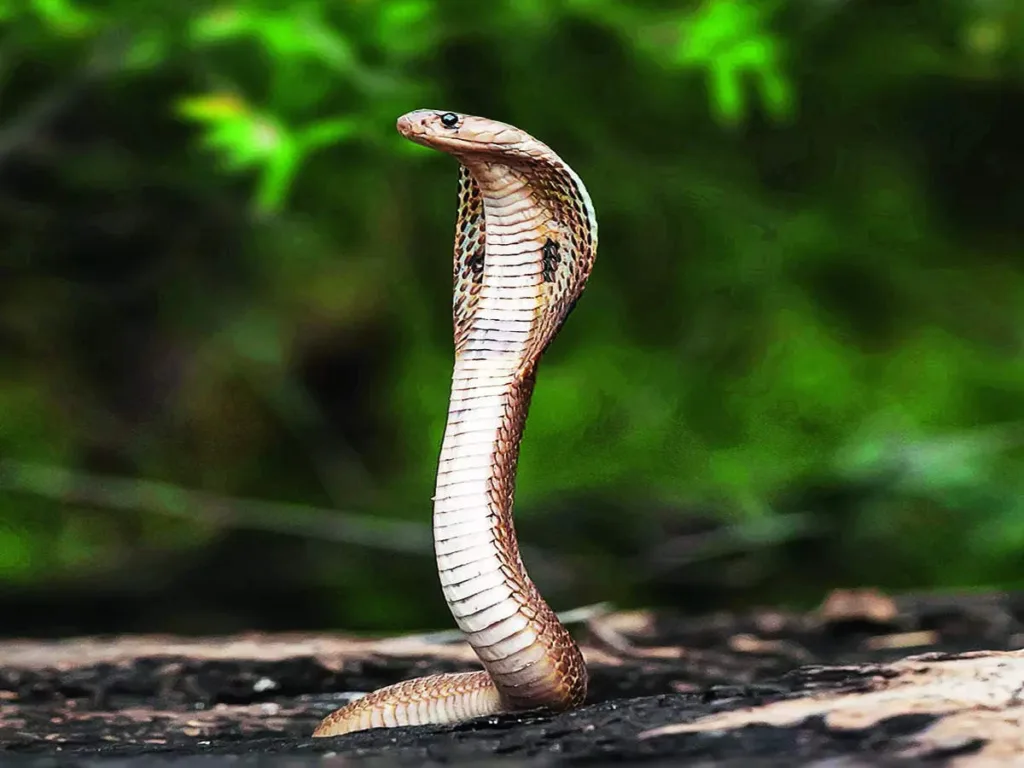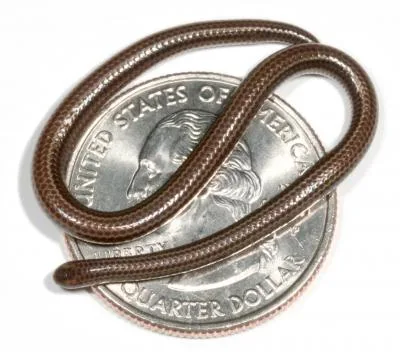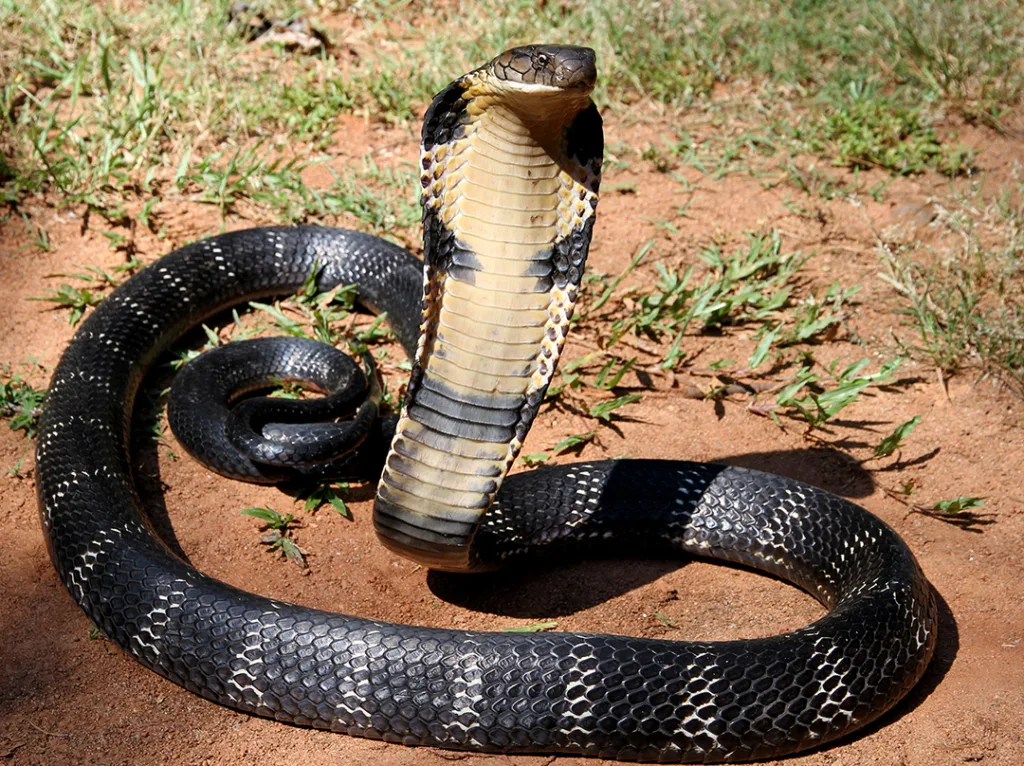
- Snake eyes can reveal a snake’s poisonous status.
Venomous snakes generally have slitted or elliptical pupils, while non-venomous snakes usually have round pupils. Definitely one of the snake facts to keep an eye out for. However, there are still certain exceptions. If you encounter a snake, it’s best to stay away.
2. There are 600–1800 bones in a snake skeleton, depending on the species.
Each snake has ten bones in its skull and jaw, but each snake has a different set of ribs and vertebrae. For instance, the 10 cm long thread snake has 600 bones total, with each vertebra having an average of 200 and each rib having two. In comparison, larger and longer snakes have far more.
3. Snakes have a 170-year lifespan.
Captive snakes can live as long as 170 years, but in the wild, they can survive to 100 years.
4. The venom of the pico jackfruit snake may be able to treat cancer.
The Pico jackfruit snake or bushmaster is native to South America. Its potent venom causes vomiting, diarrhea, blood pressure crash, blindness, and a closed-up throat. If left untreated, an adult can die in minutes. However, scientists are exploring this venom as a cure for cancer. Through experimentation, scientists are trying to engineer venom to target cancer cells.
5. The longest snake in the world is the reticulated python (Malayopython reticulatus).
The longest snake in the world, the reticulated python (Malayopython reticulatus), regularly exceeds 6.25 meters in length.

6. Leptotyphlops carlae, a small burrowing member of the snake family Leptotyphlopidae, is known as the Barbados thread snake.
Barbados threadsnake, (Leptotyphlops carlae), a tiny burrowing member of the snake family Leptotyphlopidae. Reaching a maximum adult length of only 10.4 cm (4.1 inches) and an average weight of 0.6 g (0.02 ounce), it is thought to be the world’s smallest known snake.

7. The black mamba is the world’s fastest snake.
The black mamba is recognized as one of the deadliest snakes in the world. In a snap, the black mamba can move 4.32 to 5.4 meters per second, which is the fastest for any snake. Its venom is highly potent. Although the development of antivenom has lowered casualties, the black mamba still kills around 20,000 per year in Africa.

8. A pine snake spends most of its time underground.
The pine snake feeds on its prey by entering rodents’ burrows and pressing them against the walls. It also stays underground during winters and hot summers.
9. The Sonoran Coral snake farts when scared.
When you visualize a snake ready to attack, you’d definitely think of it hissing or baring its fangs, which is mostly true. The Sonoran Coral Snake is an exception, though. For a venomous species, it has a strange way of dealing with threats: the Sonoran coral snake will hide its head under its body, raise a tightly-curled tail, and force gas from its cloaca. Experts call this phenomenon cloacal popping. As you’d expect, the gas emits a foul smell to drive away enemies. How’s that for crazy snake facts?
10. The king cobra is believed to be one of the most intelligent snakes.
The only species of snake with a strong feeling of family is the king cobra. They are the only snake species that build nests and protect their young, in contrast to the majority of snake species that do so.

11. Mad snake disease can make snakes tangle into each other.
Captive snakes were recently diagnosed with the fairly new Inclusion Body Disease (IBD) which makes domestic boas and pythons tangle their bodies to death. The virus was said to come from infected rodents.
12. The St. Lucia racer is the most endangered snake.
Currently, only 18 to 100 of these snakes are left in the West Indies.
13. A stressed snake may eat itself.
Snakes may also suffer from excessive heat. Without any nearby food, heat can make a snake feel hungry, at which point it may begin to feed on itself. An overheated snake won’t be able to stop biting once it starts since snakes also have the impulse to keep prey in, and it may finally die from blood loss.
14. A snake’s body will fail if temperatures reach below 10°C.
Snakes cannot produce their own body heat because they are cold-blooded. For warmth, they frequently lie on rocks and tan. Once temperatures drop below 10°C, a snake will become immobilized and could potentially die if not taken to a warmer environment.
15. Snakes can eat things 75-100% bigger than their own size.
One of the scarier snake facts: A snake’s jaws are not fixed to its skull. Instead, they are connected loosely to the skull by ligaments. This loose connection lets snakes open their mouths around 150° to swallow their prey whole.
16. Snakes use their tongues to navigate.
When snakes stick their tongue out, it’s not just an intimidation tactic. Most snakes have poor eyesight and hearing, so they have to rely on their tongues to navigate and locate prey. Their forked tongues pick up pheromones in the surroundings, routing the signals to the Jacobson’s Organ and giving them a sense of direction.
17. Snakes can explode after overeating.
Although a snake’s jaws and body can stretch multiple times its own size, it also has its limits. In Florida, a 13-foot python was found with a 6-foot alligator protruding from its body. The python’s head was missing, while the alligator’s tail and hind leg stuck out from its body. Definitely one of the more disturbing snake facts.
18. Pythons kill their prey by suffocating it.
Reaching lengths of 16-23 ft, pythons are some of the biggest and thickest snakes out there. They make up for the lack of venom by constricting their prey. An experiment showed that a reticulated python applied 6 pounds of pressure per square inch during constriction, which causes instant internal damage in most animals. Despite being some of the biggest snake species, ball pythons have also been a top choice for domestication.
19. Two-headed snakes don’t survive long.
You’d assume that more two-headed snakes would survive and proliferate in the wild as one of the animals with the greatest incidences of polycephaly. They don’t really survive for very long though because the two heads fight over food and frequently turn on one another. One one of those sad yet unsettling snake truths.

20. Snakes lack exterior ears.
However, a snake can still hear through its skin, muscles, and bones carrying vibrations to its inner ears.









